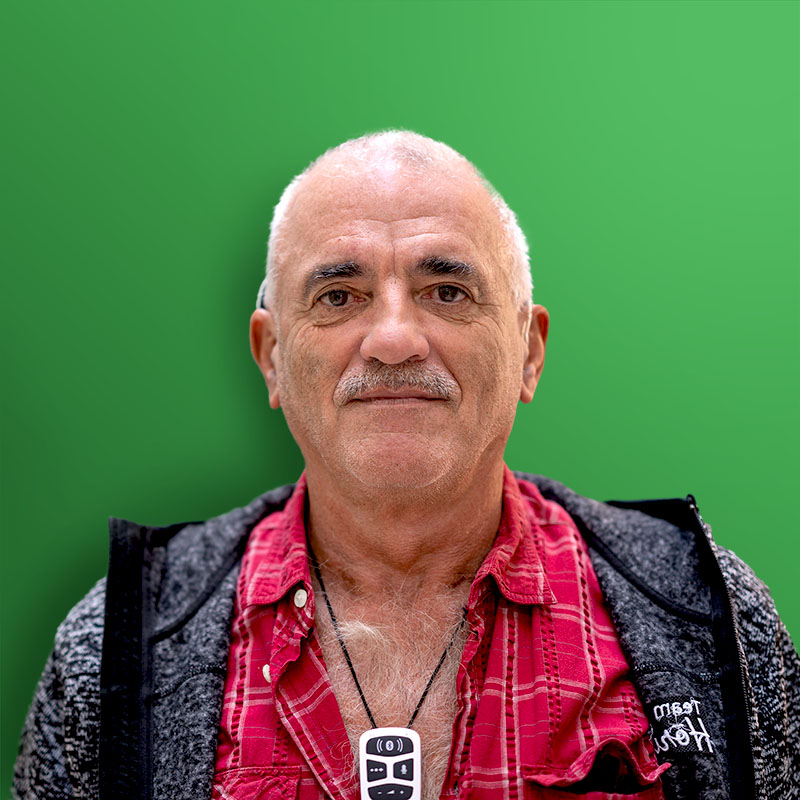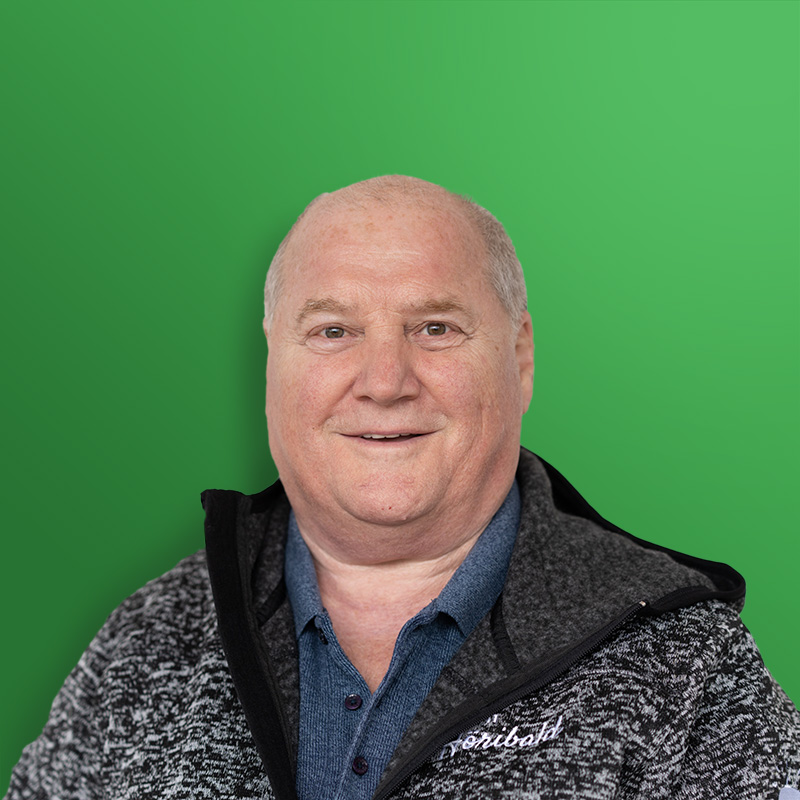.The Medical Field


.The Medical Field
Medical provision for hearing impairment
Whether you have an acute hearing loss or a continually progressive loss, or your old implant has to be changed – you can find useful medical information here and Austrian institutions that will ensure a fast and safe diagnosis and provision and give you the best support.
Contents
Decision to have a hearing implant
From suspected issue to diagnosis
Hearing disorders, especially on one side, unless they arise from illness or accident, develop gradually with advancing age so that often they are not identified and treated until late.
Further steps to the expert
![]() If you should notice that a reduction in hearing is affecting your everyday life, you should go to the specialist immediately. Early hearing provision is hugely important for maintaining your quality of life!
If you should notice that a reduction in hearing is affecting your everyday life, you should go to the specialist immediately. Early hearing provision is hugely important for maintaining your quality of life!
Your general doctor will then refer you to a registered ENT expert or even to an ENT clinic nearby, who will arrange further tests to get a final diagnosis.
Hearing implant systems
If it should transpire that the type or extent of the hearing loss excludes fitting with a conventional hearing aid, you can get some information about the possibility of an implant hearing system aimed at people with the highest degree of hearing difficulty:
Information on the reliability of MED-EL implant systems here:
https://www.medel.com/de-at/hearing-solutions/cochlear-implants/reliability
Bilateral hearing provision
![]() Specialists explain to us why nature gives us two ears, that it is not a coincidence and what we miss by having only one hearing ear.
Specialists explain to us why nature gives us two ears, that it is not a coincidence and what we miss by having only one hearing ear.
Bilateral (both sides) cochlear implants or an implant in the deaf ear where there is a unilateral hearing loss or as a supplement to the hearing aid on the other ear enables localization, good hearing on both sides and understanding from all directions. Thus, it provides a balanced and three-dimensional hearing impression and consequently better understanding of speech in a noisy environment. Since everything is heard from both sides, you can also perceive the sound more loudly. This effect makes hearing “easier” and you will not tire so quickly with difficult conversation subjects or group discussions. Apart from that, the central hearing (brain) of both sides is stimulated, and last but not least, the implant on the second side offers a back-up system in case batteries run out or a wire in the audio processor breaks.
All in all, it can be said that bilateral implants offer – as, analogously, does an implant on the deaf side – the possibility for optimal hearing and language development and greater security in everyday situations.

Kontakt zu Experten
The service center ZENTRUM HÖREN in Vienna offers the counseling services for people with hearing loss, advises on the different types of hearing implants and provides long-term care for users after the surgery.
You can find the direct contact to the experts, in order to take further steps and book an appointment for a professional counseling.
About the operation
Required preliminary examinations
After a consultation meeting and various audiological examinations in your Implant clinic, assuming that everything indicates a decision for a cochlear implant, an X-ray image is taken or a computer tomography scan (CT) and the special test of the function of the auditory nerve which is a precondition for a successful implant.
In the case of an implant exchange, a CT scan will also be required to determine the exact location of the old implant thus keeping the duration of the operation duration to a minimum.
Actions before the operation
![]() Cochlear implants are carried out across Austria in many ENT Clinics. You get optimal surgical and therapeutic support in all of these institutions so you can choose the clinic you trust near you with reassurance.
Cochlear implants are carried out across Austria in many ENT Clinics. You get optimal surgical and therapeutic support in all of these institutions so you can choose the clinic you trust near you with reassurance.
A cold might lead to the operation date being postponed. Since these appointments are often set well in advance, you should take special care for one to two weeks in advance of the operation and avoid any situations where you could get a cold.
Please check the list of medicines you might take regularly together with your general practitioner. Some medicines might be a problem in respect of an operation due to their ingredients and must be discontinued or adjusted in good time.
A comprehensive internal medical examination is standard before any operation and ensures a complication-free operation and recovery procedure.
If you are already fitted with a CI or a hearing aid on the other ear, it is helpful to hand it to the care staff shortly before the operation so that you have access to them immediately after the operation in the recovery room. If you can’t hear at all, it is sensible to inform the staff of this in good time, so that alternative forms of communication can be used. Usually, the staff in CI clinics are tuned and trained to work together perfectly.
The operation
![]() You might be excited and anxious. However, you can be reassured by the decades of experience of the clinicians and technicians. By contrast to say, a tonsillectomy (removal of the tonsils), the intervention is in a comparatively harmless area and is now a routine intervention in ENT surgery.
You might be excited and anxious. However, you can be reassured by the decades of experience of the clinicians and technicians. By contrast to say, a tonsillectomy (removal of the tonsils), the intervention is in a comparatively harmless area and is now a routine intervention in ENT surgery.
The operation is generally done with minimal invasion (a small incision directly behind the ear), lasts between one and two hours and requires an in-patient stay in the clinic of only a few days, even if the provision is on both sides, as is usual now.
In the implantation, a reception coil is attached to the skull behind the ear and an electrode is fed into the cochlea through a small opening called the oval window.
An intra-operative test by the technician in attendance will establish whether you respond positively to the first stimulation of the implant.
After the operation
![]() The medical staff in the recovery room will look after you immediately after the operation and should be informed of your hearing impairment.
The medical staff in the recovery room will look after you immediately after the operation and should be informed of your hearing impairment.
The pain from the wound will not be too great or last for too long as it is now only a small incision. Patients also recover more quickly as the duration of the anesthetic has been significantly shortened after the decades of development of the operating techniques.
The more advanced the age of the patient, the greater the chance of feelings of dizziness after the operation. In itself, this is harmless and is possible because the intervention is close to your balance organs. If this happens, inform the hospital staff.
In the course of discharge from the clinic, the medical and care staff will give you some information to take home that must be followed. This includes:
- Regularly taking any medicines required (antibiotics, painkillers etc.)
- The hair may not be washed until the stitched are removed (stitches must remain dry)
- General protection in the first weeks up to initial programming.
First hearing impressions with the implant system
At the earliest after the stitches are removed (around ten days after the operation) but at the latest four weeks after the operation, the fitting and programming takes place. In this, you receive the outer part of the implant the “audio processor” which is worn behind the earlobe or as a Button processor (slightly above) . The system can only be activated buy this. Up until this day, the ear is still deaf after the operation. The audio processor is switched on and programmed. Audio signals can immediately be transmitted to the implant and perceived. This is a great and unforgettable moment for you and your relatives!
Tip: Take someone to accompany you to the first appointments! A partner, friend or relative can be a great support and offers security in stressful situations for you, especially in the initial phase.
For me the implant just means quite simply: Life!
K.H. Fuchs
Radiological examination with hearing implants
If a radiological examination is required for any reason following the fitting of the implant, this is not a cause for concern for users of MED-EL systems.
During X-ray imaging, Computer tomography (CT), sonography (ultrasound) or scintigraphy can be carried out without special preparation and with no concerns, you must be aware of the field strength (Tesla) used in magnetic resonance tomography (MRT, MRI). In the clinical range, field strengths of 1.0 or 1.5 Tesla are usual, and recently up to 3.0 Tesla. Machines with higher magnetic force are only used in research.
With the exception of the previously used middle-ear implants VORP 502, all MED-EL hearing implants are MR compatible up to 1.5 Tesla, the SYNCHRONY-implant with the special magnetic assembly even to 3.0 Tesla.
Users of MED-EL implants report an unpleasant sensation in MR only in rare cases, and no serious complications for MED-EL users have yet arisen through MR.
In any MR-examination, the doctor carrying out the examination should be informed about the implant when the appointment is made so that there is enough time before the appointment for any enquiries to be made with the manufacturer of the implant. Detailed and current specification of the compatibility of your implant with medical procedures is provided by MED-EL at http://www.medel.com/isi/.
Contacts
Kontakt zu Experten
The service center ZENTRUM HÖREN in Vienna offers the counseling services for people with hearing loss, advises on the different types of hearing implants and provides long-term care for users after the surgery.
You can find the direct contact to the experts, in order to take further steps and book an appointment for a professional counseling.
Persönlicher Kontakt zu Betroffenen
Die Möglichkeit, mit anderen NutzerInnen direkt in Kontakt zu treten, ist gerade am Anfang dieser besonderen Reise unermesslich wichtig für Betroffene. Hier finden Sie persönliche Kontakte, die sich gerne für unsere Website als BeraterInnen und zum Erfahrungsaustausch zur Verfügung gestellt haben – denn Hören verbindet!










